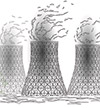Last Word: Striking a Balance - Prioritizing Electric Infrastructure While Preparing for the Next Wave of Industrial Expansion
As constraints on power availability become more acute, embracing a utility-first approach emerges as imperative.
Q1 2024

Against the backdrop of robust economic development, U.S. shareholder-owned electric utilities are poised to inject a staggering $168.2 billion into the sector in 2025 alone, thereby fortifying industrial real estate. This influx of capital presents a unique window of opportunity for discerning developers and communities that prioritize alignment with utility considerations.
Navigating the U.S. Energy Transition
Effectively navigating the energy transition requires a concerted focus on adopting a utility-first approach. Collaborative efforts among private developers, community economic development organizations, and utilities are essential to adapt to the evolving energy landscape. Utilities are proactively revising integrated resource plans to modernize infrastructure, align with historic economic commitments, and facilitate the transition towards cleaner energy sources.
In regions with a strong industrial focus, aligning investments in site readiness with carbon resource plans and forthcoming electric infrastructure projects is paramount. Master planning for industrial endeavors tailored to the demands of tomorrow’s digital economy necessitates a heightened emphasis on energy integration. Thus, cooperation with utility providers becomes an indispensable factor in optimizing the potential return on investment for developing sites.
By fostering collaboration and embracing strategic utility-led planning, stakeholders can align site readiness initiatives with broader economic development objectives, thereby engendering prosperous and sustainable outcomes for all parties involved. Beyond Traditional Energy-Related Due Diligence
The challenges posed by political and economic headwinds impeding traditional generation projects like gas and nuclear plants underscore the urgency of embracing distributed energy solutions. This shift is driving the co-location of industrial investments with renewable energy sources such as solar, wind, and battery storage. Such a strategic alignment necessitates meticulous considerations in design, zoning, and infrastructure planning.
The burgeoning demand for electricity propelled by the electrification of industrial processes alongside the ongoing clean energy transition underscores the need for a sophisticated approach to industrial master planning.
Teams must go beyond traditional energy-related due diligence, considering factors such as future resource planning, utility capital outlays, evolving generation mixes, circuit capacities, right-of-way acquisitions, and navigational challenges in permitting processes. Overlooking these intricacies can lead to protracted timelines for industrial real estate projects, potentially rendering otherwise viable prospects unfeasible.
Ultimately, striking a harmonious balance between the demands of utility-driven industrial projects and the diverse needs of developers and communities is paramount. By fostering collaboration and embracing strategic utility-led planning, stakeholders can align site readiness initiatives with broader economic development objectives, thereby engendering prosperous and sustainable outcomes for all parties involved.
Project Announcements
Australia-Based Aquatic Leisure Technologies Group Plans Opp, Alabama, Manufacturing Operations
12/11/2025
Teradyne Plans Wixom, Michigan, Robotics Operations
12/11/2025
Robinson Plans Altoona, Iowa, Manufacturing Operations
12/11/2025
BioTouch Expands Columbus, Georgia, Operations
12/11/2025
Natrion Plans Erie County, New York, Battery Components Operations
12/11/2025
Czech-Based GZ PrintPak Expands Mount Pleasant, Wisconsin, Manufacturing Operations
12/11/2025
Most Read
-
The Workforce Bottleneck in America’s Manufacturing Revival
Q4 2025
-
Rethinking Local Governments Through Consolidation and Choice
Q3 2025
-
First Person: Filter King’s Expansion Playbook
Q3 2025
-
Lead with Facts, Land the Deal
Q3 2025
-
How Canada Stays Competitive
Q3 2025
-
Investors Seek Shelter in Food-Focused Real Estate
Q3 2025
-
America’s Aerospace Reboot
Q3 2025







